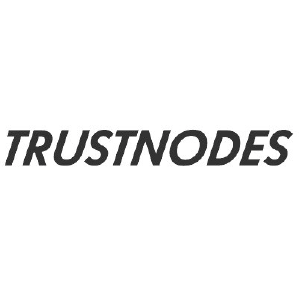In the fast-evolving world of technology, where automation is rapidly reshaping industries from finance to fulfillment, Amazon continues to push boundaries. For those following the disruptive potential of AI and automation, the latest development from the e-commerce giant offers a fascinating glimpse into the future of supply chains and logistics. Amazon has unveiled a new addition to its growing fleet of Amazon warehouse robots that brings a unique capability: a sense of touch. Introducing the Amazon Vulcan Robot Amazon’s newest creation, named Vulcan, is designed to tackle some of the more complex tasks within its vast storage facilities. Unlike previous generations of robots primarily focused on moving entire shelves or simple pick-and-place operations, the Amazon Vulcan robot is engineered for finer manipulation. Its standout feature is its ability to ‘feel’ the items it interacts with, thanks to integrated force sensors. Here’s a closer look at what makes Vulcan unique: Dual-Arm Design: Vulcan features two distinct arms. One is used for rearranging items within storage compartments, clearing space or organizing. Advanced Grasping: The second arm is equipped with both a camera for visual identification and a suction cup gripper. This combination allows it to locate and pick specific items. Tactile Feedback: The crucial innovation lies in the force sensors. These provide the robot with tactile feedback, allowing it to sense contact and potentially adjust its grip or movement based on the pressure it feels. This is a significant step towards more dexterous robotic manipulation. AI Training: Amazon states that Vulcan was trained using physical data, including force and touch feedback. This training enables it to pick approximately 75% of Amazon’s diverse stock. Self-Improvement: The robot is also designed with the capacity for self-improvement over time, suggesting a machine learning component that allows it to refine its picking strategies based on experience. AI Robotics in Action: Deployment and Performance The Amazon Vulcan robot isn’t just a lab prototype; it’s already being deployed in real-world warehouse environments. Amazon has placed Vulcan robots in operation in Spokane, Washington, and Hamburg, Germany. These early deployments are already showing promising results. According to Amazon, the Vulcan robots have processed half a million orders to date across these locations. This demonstrates their capability to handle actual customer fulfillment tasks and integrate into existing logistics workflows. The deployment highlights the practical application of AI robotics in enhancing operational efficiency. The Bigger Picture: Warehouse Automation at Amazon Vulcan is merely the latest iteration in Amazon’s extensive investment in warehouse automation. The company utilizes hundreds of thousands of robots globally to assist in fulfilling customer orders. These range from Kiva robots that move entire shelves to robotic arms that sort packages. The goal of this widespread warehouse automation is multi-faceted. It aims to increase the speed and accuracy of order fulfillment, reduce operational costs, and potentially improve safety by handling repetitive or heavy lifting tasks. The introduction of more sophisticated AI robotics like Vulcan signifies a move towards automating tasks that previously required human dexterity and judgment. Logistics AI and the Future Workforce The increasing integration of AI and robotics, particularly in areas like logistics AI, often sparks debate about the impact on human employment. Critics frequently express concern that Amazon’s substantial investments in automation are primarily aimed at replacing human workers. Amazon, however, counters this perspective. The company argues that robots like Vulcan serve to make warehouses safer places for human employees. By automating tasks that might involve repetitive strain, awkward movements, or working in confined spaces, they can potentially reduce workplace injuries. Amazon maintains that these robots work alongside human employees, handling specific tasks while people focus on others that require more complex problem-solving, judgment, or direct interaction. While the long-term impact on the workforce remains a subject of ongoing discussion, the immediate focus for Amazon appears to be on augmenting capabilities and enhancing efficiency through advanced AI robotics and warehouse automation. Conclusion The debut of the Amazon Vulcan robot marks a significant step forward in AI robotics, bringing a sense of ‘touch’ to warehouse automation. This capability allows the robot to handle a wider variety of items with greater precision, integrating tactile feedback into its operations. As the Amazon Vulcan robot is deployed and learns in real-world environments, it demonstrates the practical application of advanced logistics AI in optimizing fulfillment processes. While the debate surrounding automation and jobs continues, Amazon positions these developments as enhancing safety and efficiency within its vast network of Amazon warehouse robots, pointing towards a future where humans and advanced machines collaborate to meet the demands of global e-commerce. To learn more about the latest AI market trends, explore our article on key developments shaping AI features.

















